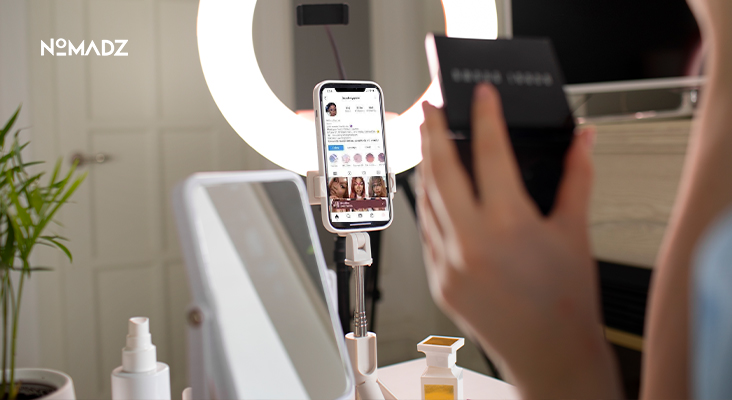What is Influencer Whitelisting and How It Works for Facebook Ads?
Influencer whitelisting lets brands run ads through FB influencers’ accounts with their permission, tapping into trusted audiences. That’s what influencer whitelisting (or influencer allowlist) is all about; it’s a smarter path than traditional influencer ad or spend. We’ve seen campaigns lift conversion rates by 30%.
In this blog, I’ll walk you through a clear breakdown of what whitelisting is, what whitelisting social media strategies are, why they work, and how we can apply them in your Facebook advertising efforts.
Why Traditional Influencer Ads Aren’t Delivering and What’s Missing?
The Limits of Traditional Ads
You’ve tried boosting content or running standard ad campaigns, but results fall flat. Without direct access to an influencer’s profile, your reach is limited to your brand’s audience, and that’s often much smaller. Posts get lost in feeds, and there’s no way to refine targeting based on influencer followers.
That’s what allowlist solves: it bridges the gap between your brand and FB influencers’ engaged communities.
When Reach Isn’t Real Reach
When your ad budget is burned through generic boosting, it feels ike shouting into a void. Likes and comments might show up, but click-through rates and actual conversions stay low. You pay for impressions, but your ROI lags.
Worse, some ad posts don’t align with your brand messaging, so ad spend becomes an inefficient mix of guesswork. You know you need more control, but not consolidation. That’s where the allowlist comes in.
How Influencer Whitelisting Works?
Influencer whitelisting isn’t just about access, it’s about control, precision and performance. Once you’re approved, you can run data-driven campaigns through an influencer’s account with real targeting, real metrics and real reach. Here’s how the process works, step-by-step.
1. Getting Permission
First, brands request permission to run ads from an influencer’s account. That’s whitelisting influencer content, granting access via Facebook Business Manager to their profile. This isn’t shady: influencers opt in, permitting them to share content as ads. It’s transparent and compliant with platform rules.
Once permission is granted, you can boost or run full campaigns directly from their account. This access also allows you to create entirely new ads using the influencer’s image or video, with your copy, links and call to action. The key benefit is authenticity paired with brand control.
When influencers whitelist your brand, it shows their audience they trust you enough to collaborate beyond organic posts. It also creates long-term potential for retargeting and lookalike audiences, based on real engagement. You also build better creative flexibility without starting from scratch every time.
2. Targeting Precision
Instead of generic targeting, allowlist allows brands to overlay custom audiences on top of an influencer’s reach. Interested in a niche demographic? You can target individuals who are similar to the influencer’s followers but haven’t already seen the content.
You take their post, which could be a video, carousel or images, and run it like an ad. That’s whitelisting content plus audience targeting at scale. Allowlist also enables you to exclude segments that have already interacted with your previous ads, making your spend more efficient.
You can test different interest groups, create split campaigns for various age brackets, or even localize based on cities or ZIP codes. Since influencer audiences are often highly specific, influencer whitelisting targeting precision helps eliminate waste and maximize conversion potential. More accuracy means fewer wasted impressions and stronger conversion performance.
3. Ads That Look Native
Since you’re using the influencer’s existing post, the ad feels native and familiar. It shows up in audiences’ feeds as if the influencer posted or boosted it. That’s different from standard whitelisting advertising, which can feel impersonal. This approach boosts engagement because it builds trust and leverages social proof.
People follow influencers they like, and when that content appears, it’s more likely to convert. Native-looking ads also help avoid ad fatigue, especially among younger users. Sponsored content from a recognizable face feels less intrusive than a polished brand ad. When the message aligns with the influencer’s usual tone, people are more receptive.
Additionally, you can test multiple creatives under the same influencer’s profile to find the one that performs best. This method in influencer whitelisting keeps the look consistent while improving ad performance.
4. Analytics and Optimization
You get access to Facebook’s ad metrics, click-through rate, engagement and conversions. You can A/B test different audiences or copy. That’s influencer whitelisting advertising in action: using data to iterate. If you noticed certain segments respond better, tailor the campaign.
If a feed link gets more clicks than a story placement, shift budgets accordingly. The result is optimized spending and measurable ROI. These analytics also open up deeper campaign insights like time-of-day performance, creative fatigue or conversion windows. You can track how each piece of content performs in specific placements.
You can track how each piece of whitelisting influencer content performs in specific placements. If one influencer consistently drives purchases while another only gets clicks, you can reallocate your budget accordingly. Over time, the feedback loop creates highly efficient influencer ad strategies.
Data-backed tweaks can scale what’s working and cut what’s not.
Conclusion
Influencer whitelisting combines trust, precision targeting and performance tracking. By using FB influencers’ content through direct access, you control the ads while reaching real, engaged audiences. This strategy improves ROI and delivers scalable results. If you want more from your Facebook ads, an influencer allowlist is a proven, strategic move worth investing in.
FAQs
Q. What is an example of influencer whitelisting?
A brand runs an ad using an influencer’s original post with their permission, directly from the influencer’s account.
Q. How do I target influencers on Facebook ads?
Use Facebook Business Manager to access whitelisted influencer content and apply custom audience targeting.
Q. What is the difference between whitelisting and boosting?
Whitelisting gives ad control using influencer content, boosting only promotes posts from your page.
Q. Is the allowlist the same as boosting?
No, allowlist offers full ad control through influencer profiles, while boosting only extends reach on your posts.
Q. What is meant by Influencer whitelisting in Facebook ads examples?
It means running paid ads from an influencer’s account using their content, with targeting and analytics control.









Leave feedback about this